Unpacking oak species with ‘The Wood Whisperer’
By Georgie CollinsFrom inception, the Isle of Raasay Distillery has prioritised an innovative approach to its Scotch whisky maturation. We sat down with co-founder and master distiller Alasdair Day to discuss how something as nuanced as oak variety can impact flavour.
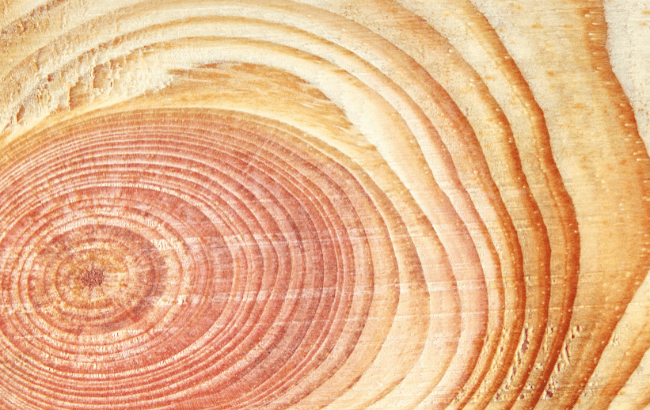
Found on the eponymous island located between the Scottish mainland and the Isle of Skye, Isle of Raasay Distillery is owned by R&B Distillers, which was founded by Day and his business partner Bill Dobbie in 2014.
When the pair decided to build their own distillery on the Hebridean island, Day tells The Spirits Business that it was then that the real decisions for the future of the brand had to be made.
“As well as designing the liquid and designing the process, I had to design an oak policy to mature the whisky,” he says. It is this oak policy that has earned him the playful moniker ‘The Wood Whisperer’. “That’s where [that name] comes from because there’s a number of number of things we had to consider: the style of whisky we wanted to make, but also the fact that we knew we wanted to produce whisky at three years old. So how do you produce an excellent whisky at three years old? Well, we can’t do the traditional Bourbon and Sherry thing because it’s going to take 10 or 12 years to mature. So how were we going to do it?”
The answer for Day was to take a more granular approach to the process and utilise specific oak species rather than simply opting for generic wood styles.

Blending and botany
It takes a lot of understanding to fully grasp the differences between oak varieties and how they might affect a spirit. For Day, it helps that he has a degree in Botany from Glasgow University, which he says “sets the scene” for how he has come to be so knowledgeable on the subject. “When it comes to whisky, I’m interested in oak species, barley variety, yeast – all that sort of stuff really interests me, because it’s an excuse to go, ‘I studied botany once upon a time.’”
But he explains that in addition to that, he has a familial connection with whisky that goes back to the 1820s when his great-grandfather blended whisky in a licensed grocery in Coldstream, Scottish Borders, which has subsequently deeply influenced his current approach to whisky making, teaching him the importance of consistency and understanding distillery characters.
While traditionally blenders needed consistent spirits from different distilleries to create reliable blends in order to produce a stable, predictable character, Day applies his inherited knowledge differently. Instead of seeking consistency, he has utilised his blending and botany background to explore complexity.
Day inherited a seller book from 1881 that documented his family’s blends, which inspired him to recreate one of the expressions in 2010. This project launched his whisky journey, as he sought to reinterpret his family’s traditional blending approach through a modern, experimental lens.
This now manifests in a meticulous approach to creating whisky, particularly in how he thinks about balancing different oak species, fermentation techniques, and spirit characteristics to create a nuanced, complex final product.
Day explains that different oak species contribute to whisky’s complexity by introducing unique flavour compounds. For example, he notes that Quercus botrya, which is a variety of European oak, brings eugenol, which tastes like cloves, while Quercus humboldtii from Colombia offers crème brûlée and caramelised sugar notes. By carefully selecting oak species like these, alongside the likes of French, North American, and Hungarian varieties, such as Quercus petraea, distillers can layer flavours – from dark fruits to spicy notes – creating a more nuanced and sophisticated whisky.
The key, he says, is understanding how each oak species interacts with the spirit and balancing those interactions to enhance the overall flavour profile.
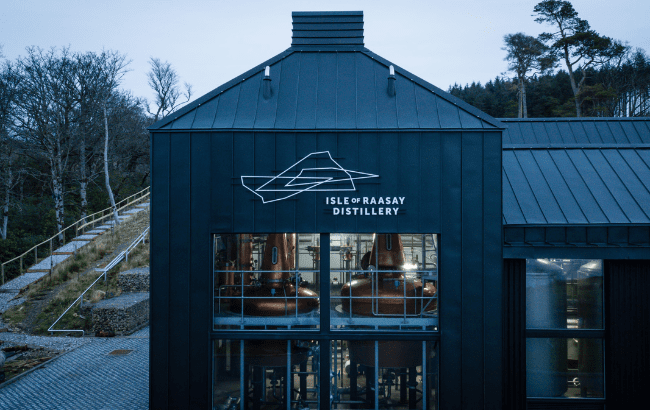
The Na Sia maturation process
To make Isle of Raasay’s flagship whisky, known as The Draam, Day uses a unique six-cask recipe, which has remained unchanged since it was introduced in 2021.
It is created with two Isle of Raasay spirits – peated and unpeated – that are matured separately in first-fill American rye casks that previously held Woodford Reserve whiskey, which adds black pepper and spice notes; then they are put into fresh chinquapin oak, known as Quercus muehlenbergii from North America, which contributes dark fruit flavours; and then Bordeaux red wine casks, which are made from two different varieties of French oak: Quercus petraea – which has a very fine grain, meaning the spirit takes longer to soak into the wood – and Quercus robur, which has a much wider grain, allowing the spirit to travel further into the wood.
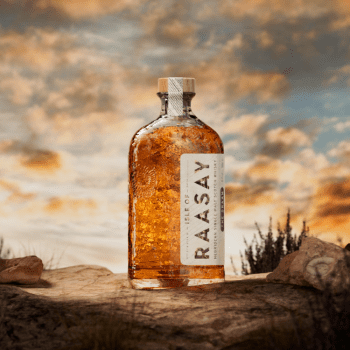
This six-cask maturation process is known as the ‘Na Sia’ (or ‘The Six’ in Gaelic), with each cask carefully selected to contribute those specific flavour profiles, with the goal of creating a balanced, complex whisky even at a young age. Day says 80% of the distillery’s production focuses on this six-cask recipe.
He explains that his choice of casks used in this maturation process were heavily influenced by the character of the distillery’s new make and the whisky he wanted to achieve.
The team aimed to create a sweet new make spirit with dark fruit flavours, and to do this, he says they considered several factors, including opting for a clear wort for an elegant character (compared with a cloudy wort that is typically less refined), an extended five-day fermentation period that helps to develop lactic acid and lowers pH, a carefully selected yeast strain, the use of smaller stills, and its head, heart and tail cut points.
Each of these variables is meticulously controlled to create the distillery’s desired sweet, dark fruit-forward spirit character. After this was initially achieved, Day then carefully considered how each oak species would interact with that specific spirit.
In addition to those casks, he shares that he has explored other varieties for ageing, noting that Quercus humboldtii from Colombia works well with these sweeter fruit elements, enhancing the spirit’s natural characteristics, while the chinquapin oak brings out dark, rich fruit flavours that complement their spirit’s profile.
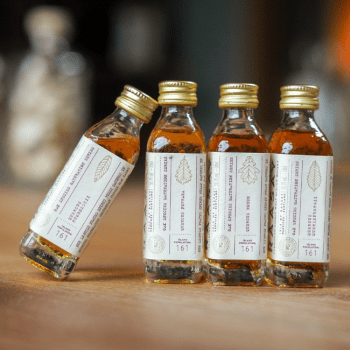
Day says they have deliberately avoided certain oak types that wouldn’t match the spirit, such as Hungarian tokaji oak, on account of its lemon-citrus notes, which wouldn’t work with the distillery character.
Day explains that the goal was to choose oak species that would not just extract flavours, but harmonise with this carefully crafted spirit.
To ensure this goal was being achieved, the casks were sampled at three-month intervals, involving a tasting panel to ensure the oak was enhancing rather than overwhelming the spirit’s inherent character. This approach – which is scientific and artistic in equal measure – is about balance and selecting oak that doesn’t mask the spirit’s unique qualities, but rather elevates and complements them. As such, this meticulous matching of spirit to oak is a key part of their production philosophy.
Cost implications
Day explains that being a smaller independent distillery is an asset to this maturation approach.
“Being a small distillery with a small team, we can react quite quickly. If we had huge amounts of casks and very big warehouses and a massive team of people that had to go and find something to check, it’s probably not such a good thing to be doing.
“If you’re setting out to produce a 15-year-old single malt, and you’re a big company producing huge volumes of spirit, you want to know that you put it in that cask, you can go to in 15 years’ time and it’s going to be exactly what you want it to be. We’ve had to come at it the other way round.”
Day shares that this maturation approach comes at an expense, which is another factor why larger, less flexible distilleries have likely shirked this technique.
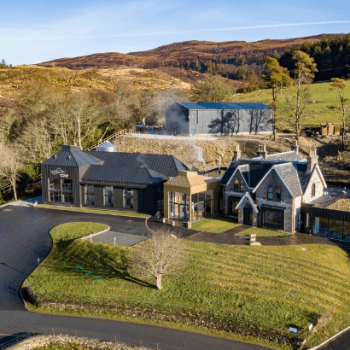
“If you think about a cask made at a cooperage in Columbia, you’ve got to get it onto a container, and then to a ship, and we’re transporting it here all the way across the Atlantic… there’s a huge cost. You would bring the wood to a cooperage here, if you could, but not at the scale that we operate at,” he says.
But, Day notes, Isle of Raasay is a premium, niche spirit, which means that the cost is justifiable to create the end product.
Same ethos, different distillery
Last year, R&B Distillers gained planning approval to build a distillery in Campbeltown, which will be known as The Machrihanish Distillery. The new site will be the first farm-to-bottle distillery in the Campbeltown region in more than 180 years, and the development will include a visitor experience, shop and tasting room.
Machrihanish will differ from Raasay in many ways, Day explains, but at the heart will remain this maturation technique.
“It will have a very different distillery character, because we want it to be a Campbeltown single malt, so for example, it will be cloudy wort, not a clear wort, and it will have small stills to make that kind of oilier, heavier, nutty spirit that you would associate with Campbeltown, and therefore, it’s got to have an oak policy that that works for that spirit. So it’s going to be different. I would think it’d be much more Sherry-forward, using Spanish oak – Quercus robur from the north of Spain – seasoned to our specification with oloroso. So there’s the plan at the minute: same idea, thinking about it in the same way, but produce a different, but complementary single malt.”
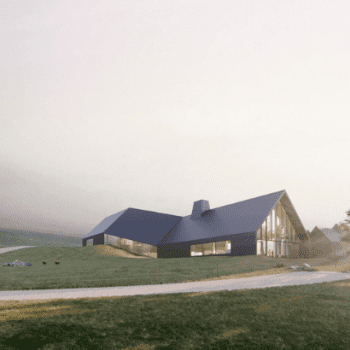
Day shares that R&B acquired the former dairy farm that will be the site of the new distillery in December 2021, and this year marks the fourth year of growing barley regeneratively on the site. He explains that there isn’t enough to provide all of the barley they will need for production, “but what we want to be a farm facility, so when you’re standing in the still room and you look out the windows, or you drive up, there’ll be barley going round the distillery. We’re trying to be sustainable as we can be, so that’s why we’re growing the barley regeneratively.”
With both this barley grown on site, and barley grown and provided by the neighbouring farms, Day estimates they will “probably get to about 300 tonnes of local barley – about a third of what we would need long term.”
In terms of when we’ll start to see anything from this new site, Day says the current global economic climate is the biggest challenge they need to contend with. “We’ve got a number of conditions that we’re slowly discharging, but being honest, the absolute earliest we would bake ground on site would be April next year. But I can see that going back a bit further.”
For now, he says the plan is to continue focusing on Isle of Raasay: “We really have to make sure that it’s doing as well as it possibly can without the distractions.”
Maturation series
For consumers interested in gaining a better understanding as to the differences between oak species and varieties, the distillery has released its Oak Species Maturation Series Tasting Pack, which takes drinkers on a journey through four distinct oak species, each showcasing a unique flavour profile in the Isle of Raasay’s signature lightly peated single malt.
The pack features four 50ml expressions all bottled at 50.7% ABV, which showcase Isle of Raasay’s signature lightly peated spirit matured in four species of virgin oak casks – Quercus humboldtii, Quercus petraea, Quercus robur and Quercus muehlenbergii.
The pack is available for purchase via the Isle of Raasay Distillery’s website and select retailers for RRP £35 (US$47).
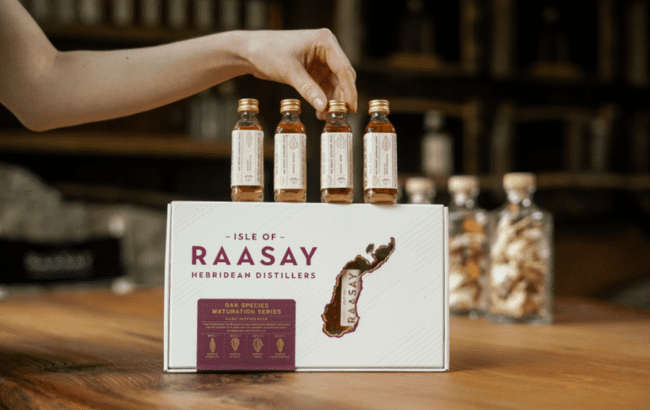
Related news
REB names partners for maturation facility
